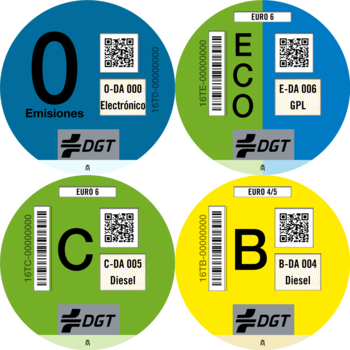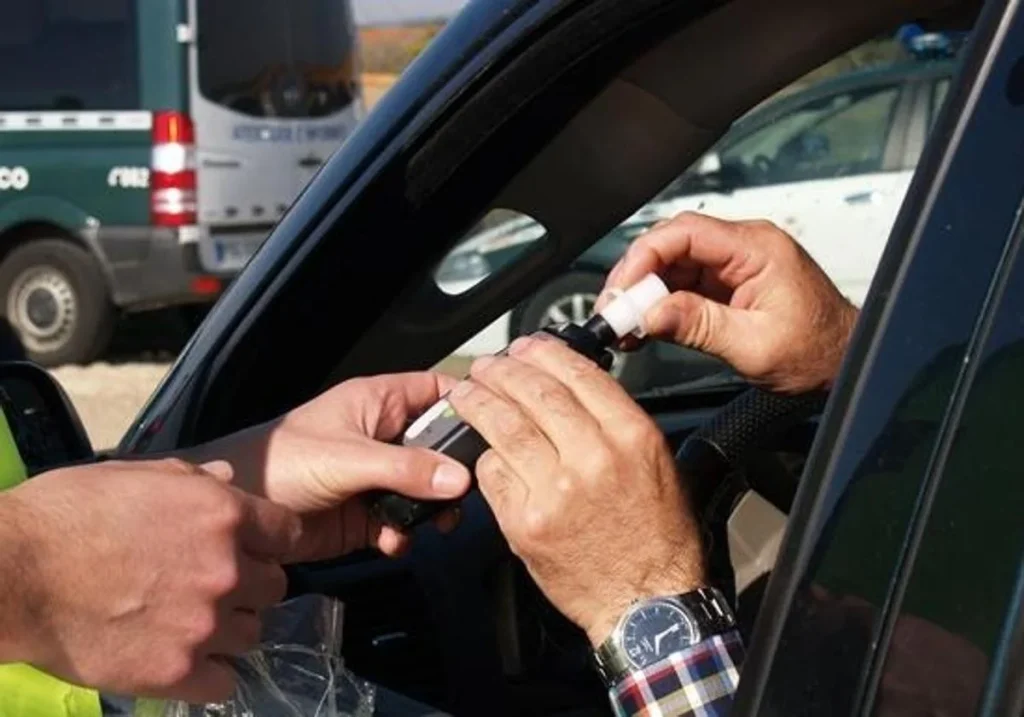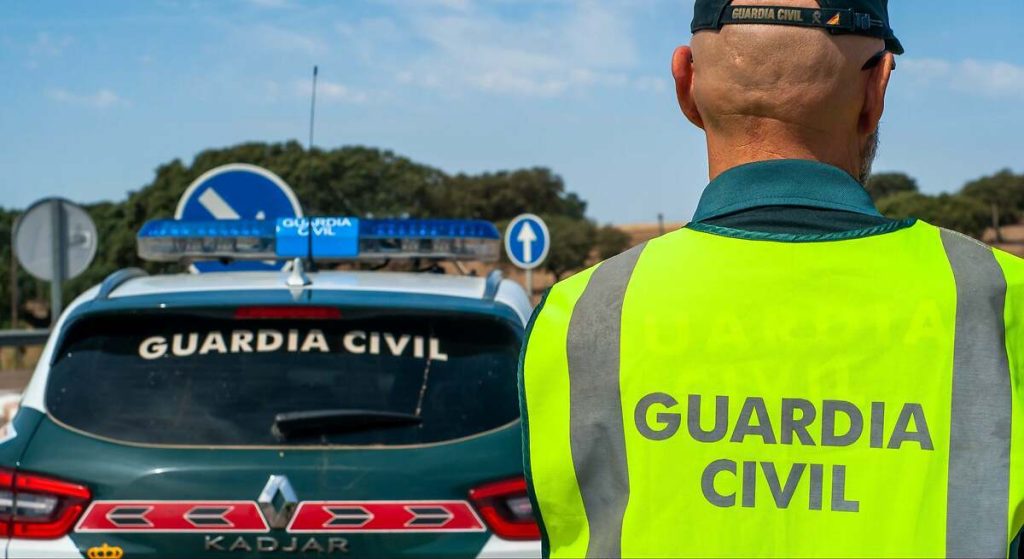RECENTLY, Spain has become more complex and expensive for motorists. This year, various initiatives will make our life more difficult here in Andalucia – from circulating to parking, with more motoring laws coming on board.
The government says it aims to “reduce environmental impact” and “enhance road safety” – as part of wider EU initiatives. However, some perceive the schemes as picking on drivers through increased restrictions and penalty fines, before “forcing them off the road” (by 2030) – because they have “polluting” vehicles.
There has been an incresed targeting of cars with the B and C environmental stickers – before many of the LEZs (low emission zones) even come into force.
The various initiatives are stirring debate, including within Andalucia. In this autonomos community of diverse landscapes – urban and rural – motorists have varying priorities. For example, those living in a mountain ‘cortijo’, running on solar power, have different needs to drivers in big cities. They might not want an electric Tesla (let’s face it: who does now?) for their off-grid farmhouse.
Challenge no. 1: Low Emission Zones (LEZs) in Andalucia
Motorists can “look foward to” the incoming Low Emission Zones (LEZs) in Granada, Málaga, and Motril that dictate who can enter the inner city and whether they can park and stay.
The Spanish Climate Change and Energy Transition Law insists that municipalities with populations over 50,000 must establish LEZs to cut those dirty vehicule emissions. Therefore, these cities have formulated plans to meet the directive.
In Granada, the LEZ was due to start on April 1, 2025, following a testing phase from October 2024. However, following harsh opposition from residents -saying they won’t be able to access their own health centre of family – the plan has been kicked down the road until October 2025.
The stated zone covers approximately 450 hectares, divided into four areas. Zone 1, covering the historic city center, has the strictest regulations. Only residents and vehicles bearing ‘Eco’ or ‘Cero Emission’ labels can park on the streets or open-air lots. Vehicles with ‘A’, ‘B’, or ‘C’ labels must use underground car parks. That is a LOT of vehicles ‘denegado’ from the zone.
Málaga’s Sustainable Mobility Ordinance started on November 30, 2024, introducing an LEZ spanning 437 hectares. Access is monitored through intelligent license plate recognition systems. During the initial three-year period, vehicles with ‘Cero’, ‘Eco, ‘C’, ‘B’ – and even those without labels – can enter under specific conditions, particularly if they are registered in Málaga. Violations will cost 200 euros.
Motril has also unveiled plans for its LEZ, targeting areas such as Camino de las Cañas and Avenida de Salobreña. It will start with a three-year phase, focused on public awareness and data collection. At this time, no restrictions or penalties will be enforced. Afterwards, access will depend on the environmental labels, with stricter limitations for the non-compliant vehicles, unless they are registered to residents of Motril. It is easy to see how people will visit Al Campo, then go no further,
While displaying environmental stickers isn’t legally required, the DGT recommends affixing them onto the lower right-hand corner of your windscreen. To be… helpful?

Challenge 2: Reducing the legal blood alcohol limit – it’s a bit “sexist”
The Spanish government has ratified its pans to lower the legal blood alcohol concentration (BAC) limit this year. Rather like the LEZs, this currently has the aspect of being “kicked down the road” – and it’s easy to see why.
For all drivers, this will be 0.2 grams per liter, aligning with countries like Norway and Sweden, and meeting EU guidance. This is a significant reduction from the current limit of 0.5 g/l for ‘normal’ motorists and 0.3 g/l for professional and novice drivers. The current limit allows both men and women a beer or glass of wine.
While the stated aim is to “enhance road safety”, there are comments about the disproportionate effect on women. Because of physiological differences (i.e.women have smaller livers), they will quickly reach higher BAC levels than men after drinking the same amount of alcohol. This will potentially cause a higher incidence of unexpected violations among female drivers. There’ll also be a situation where men can drink one ‘cana’ (small beer), while women must drink none, or throw out half the beer into the nearest plant pot.
Would 0.0% BAC for all drivers not be fairer and less like something from the “old days”? Are we returning to the general expectation that women drive their men around after the ‘hombres’ have drunk beer?
Additionally, the hospitality sector fears that stricter alcohol regulations could deter patrons. This is especially true for out of town bar/restaurants, which will suffer the most ill-effects.
Challenge 3: Proposed 10% diesel tax
In an effort to reduce emissions, the EU decrees that the Spanish government must introduce a 10% tax on diesel fuel during 2025. This aims to discourage the use of diesel vehicles, which are known for their higher pollutant levels.
However, it could disproportionately hit individuals and businesses that rely on diesel vehicles, appreciating their fuel efficiency and performance. It’s another factor in raising the cost of living. IF it is applied without gas stations applying their own discount schemes to reduce the fallout from such a scheme,
Meanwhile, where are all the subsidies for switching to a more efficient type of car? Not everyone can afford to lease or buy an EV. As a ballpark figure, buying one starts at over 10,000e.

Challenge 4: DGT controls… everywhere
The Granada region, especially La Alpujarra, has witnessed a huge surge in traffic controls, including speed checks, documentation inspections, and alcohol and drug tests. While these measures are designed to “enhance road safety”, some motorists perceive them as excessive. The frequency and intensity of the controls make some communities feel that they are being unduly targeted.
Furthermore, as ‘Granadino’ motorists are aware, as well as checking documents, the ‘traficos’ are prone to giving drivers 4+ points and 750e fines for “historic” drug use (i.e. something herbal they smoked several days ago), while ignoring the 10 beers you drank yesterday. To some people, this seems unfair.
Challenge 4: Express multas
The DGT is planning to introduce “express multas” which mean they land on your doorstep in six days instead of, potentially, 52 days. This is sure to be a joy for motorists who must then find the funds even quicker, without the chance to save up for what could be 1,000e or mo
Offences included include speeding, alcohol and drugs, use of mobile phone, and not fastening your seat belt.

Where is it all going?
The overall, combined effect of these policies is unknown. It might not be positive.
For starters, an attempt to push citizens towards purchasing or leasing EVs supports green objectives. However, it could also cause social inequity: the “haves” and “have-nots”…. the mobile and demobilised. Those who can afford the 10k car and those who cannot.
The hospitality sector, a huge part of Andalucia’s economy, also faces challenges. Stricter drink-driving laws and increased diesel costs could keep customers in their own villages, or gathering in ‘cortijos’. Establishments could promote non-alcoholic drinks and special events. However, an out-of-town wedding or communion becomes less attractive when the guests must drink water! How many Spanish men like a nice ‘Nestea’ with their children (we are not debating the morals of this, but it is a fact)?
To deal with non-compliant, polluting vehicles, park and ride schemes are appearing in cities like Granada, Málaga, and Motril. These will allegedly reduce city centre traffic, as drivers park on the outskirts and catch public transport to the inner parts. However, do they have enough capacity? Are they convenient? Will people drag their shopping around on a bus? The success of these schemes depends on efficiency (not patchy public transport) and affordability. Otherwise, people will avoid visiting city centres entirely. This will ruin inner city businesses – a bit like in the UK where every second store appears to be a vape shop of nail bar.
“Backdoor” methods
There’s also the question: are some of these policies a ‘backdoor’ way to achieve certain government aims? Such as: discouraging “alternative communities”, who are perceived to use drugs, from inhabiting tourism areas which are aimed to gentrify? By surrounding such towns with endless controls every weekend, surely the “hippies” will be discouraged?
The bigger picture, however, could – indeed – be forcing people to buy or lease EVs, or not use cars at all. Following the money, the leasing companies stand to gain, as does the government through penalty fines. However, for people learning low incomes n rural settings – where EVs “no va” – there could be a bumpy ride ahead.
